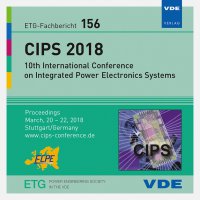Electromagnetic noise induced by novel high voltage fast switching device
Conference: CIPS 2018 - 10th International Conference on Integrated Power Electronics Systems
03/20/2018 - 03/22/2018 at Stuttgart, Deutschland
Proceedings: CIPS 2018
Pages: 8Language: englishTyp: PDF
Personal VDE Members are entitled to a 10% discount on this title
Authors:
Funaki, Tsuyoshi (Osaka University, Osaka, Japan)
Abstract:
The recent development of wide band gap power semiconductor device enables high voltage power conversion circuit to operate with fast switching. High dv/dt and di/dt resulting from fast switching operation of high voltage and large current emanates EMI noise. Then, proper power electronics system design for EMC is required. EMI noise is conventionally evaluated with frequency spectrum, but it discards the information of noise generation timing, which gives valuable intelligence in identifying the origin of noise. This paper presents the time and frequency EMI noise analysis method in spectrogram approach and indicates the crude for clarifying noise generation mechanism. The difference in the generated noise spectrum distribution between turn on and turn off operation is clearly observed in the spectrogram. Also, SiC power device is prone to induce higher frequency EMI nose component than conventional Si power device. The harsh switching operation not only scatters EMI noise to others, but also faces malfunction by self-poisoning. Self turn on phenomenon of power device is presented and analysed as self-poisoning EMI, and the power conversion circuit design to mitigate the difficulty is addressed. The constitutive design of power conversion circuit is indispensable for radically improving EMC performance. Miniaturizing the size of power conversion circuit is effective in reducing the parasitic inductance and suppressing surge voltage induced in switching transient. However, minimizing the size of power conversion circuit makes thermal management difficult. That is, the thermal resistance from junction to heat sink becomes large, which stems from less thermal conduction area. Also, the high current density capability of SiC power device chip lessen the die size and results in higher thermal resistance. This paper raises the issue of simultaneous pursuit of EMC and thermal management design of power electronics system


